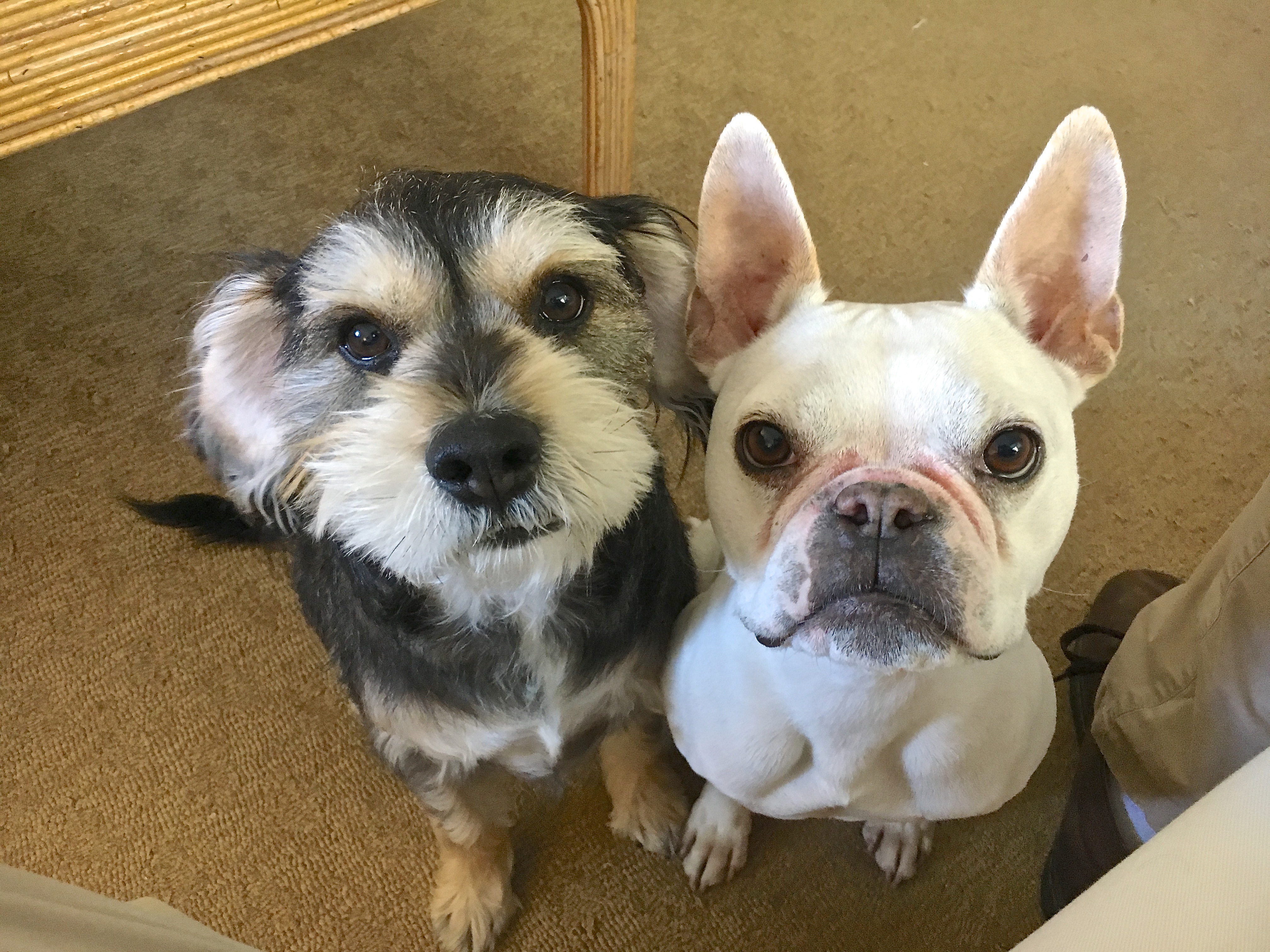Teaching a Pair of Westwood Dogs to Stay to Stop Separation Anxiety
By: David Codr
Published Date: December 6, 2017
For this Westwood dog training session we helped 6 year-old French Bulldog Huey and 4 year-old Schnauzer / Terrier mix Ollie; training them to stay to put a stop to separation anxiety and barking.
It was great seeing how quickly the dogs responded to the positive dog training techniques I started using the moment the door opened. This helped them settle down faster. When I saw them start to sit to get a reward (We call this Manding), in the first two minutes of my arrival, I knew we had a pair of smart dogs.
We started off by discussing the dog’s day to day routine so I could get a feel for the structure in place. Because they can’t verbally communicate, dogs go through life probing to determine boundaries, limits and authority.
Dogs learn through repetition, consistency and good timing. Without rules and structure, its hard to hot any of those marks. This often confuses a dog into thinking it needs to take on a leadership role. As a dog behavior expert, I have found this is the genesis of many dog behavior problems.
I showed their guardian how to add a little structure to petting and interacting with them. This will help the dog’s start to see their human as being in the leadership role. Once they establish that its a permeant change, most dogs start issuing more of a passive / follower role. This transformation will help the dog’s improve their behavior while simultaneously reducing the stress they feel because they think they need to protect and look out for the human.
Petting with a purpose, passive training and enforcing rules consistently are all important aspects of the rehabilitation process when you want to stop separation anxiety.
To address Ollie’s Separation Anxiety problem, I walked his guardian through the process I use to train a dog to stay.
Dogs who suffer from Separation Anxiety often do so because they don’t know how to be alone. When we are with our pets, we pet, love and interact with them the while time (100% access to us). That’s great, but when we leave, the dog goes from 100% access of us to 0%. That gulf is too great for many dogs to endure which send them into a panic state.
Its important to understand that a dog suffering from separation anxiety is not chewing, destroying barking or losing control of their bowels to get back at you. This was not the impression their guardian had, but it is a perception many humans get.
Separation Anxiety is essentially a panic attack where the dog is overwhelmed by a longing to be reunited with their family members. This is why you should never punish a dog who has a separation anxiety problem the same way you would never get mad at someone for being afraid of heights, etc.
By first training a dogs to stay, then practicing the stay while the human is in the house but out of sight, we can help the dogs practice being alone for progressively longer and longer periods of time without the panic setting in. After all, the dog knows we are in the next room while it stays on command. The key is to go slow and steady. All progress with no (or as few) setbacks as possible.
Fortunately the dog’s guardian takes them to day care. I have found avoiding the feeling of being alone while helping the dog learn to be alone can accelerate the recovery process when helping a dog get over separation anxiety.
I asked the guardian to follow up with me in a month to see how things are going. It will take a week or two to get the dogs to stay when she is out of sight if she practices the stay a few times a day for the next few weeks. Im hoping that once the dogs get used to being alone, and the guardian assumes the leadership role that the separation anxiety stops.
If the guardian is consistent with the rules and structure, pets with a purpose, is able to teach the stay and practice it for progressively longer and longer periods of time but the separation anxiety isn’t gone in a month, we may need to schedule a shorter follow up session. In these dog behavior sessions we focus on desensitizing the dog from the triggers that cause the dog to start feeling insecure.
To help the guardian remember all the dog training tips we covered in this in home dog training session, we filmed a roadmap to success video which you can check out below.
Categorized in: Dog Behavior


